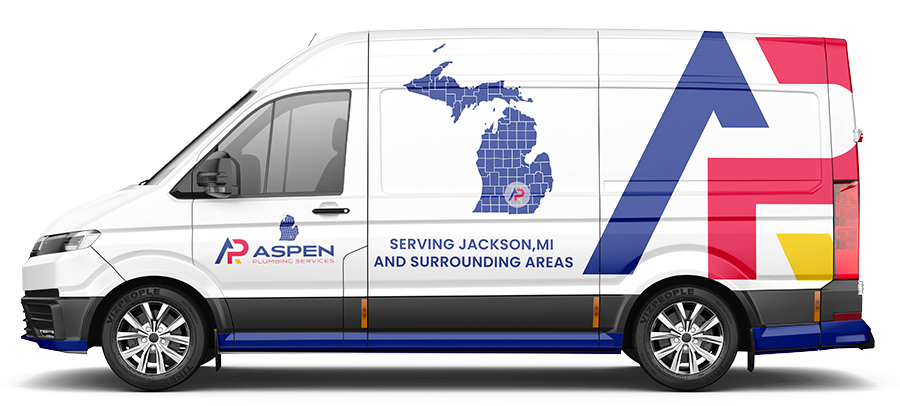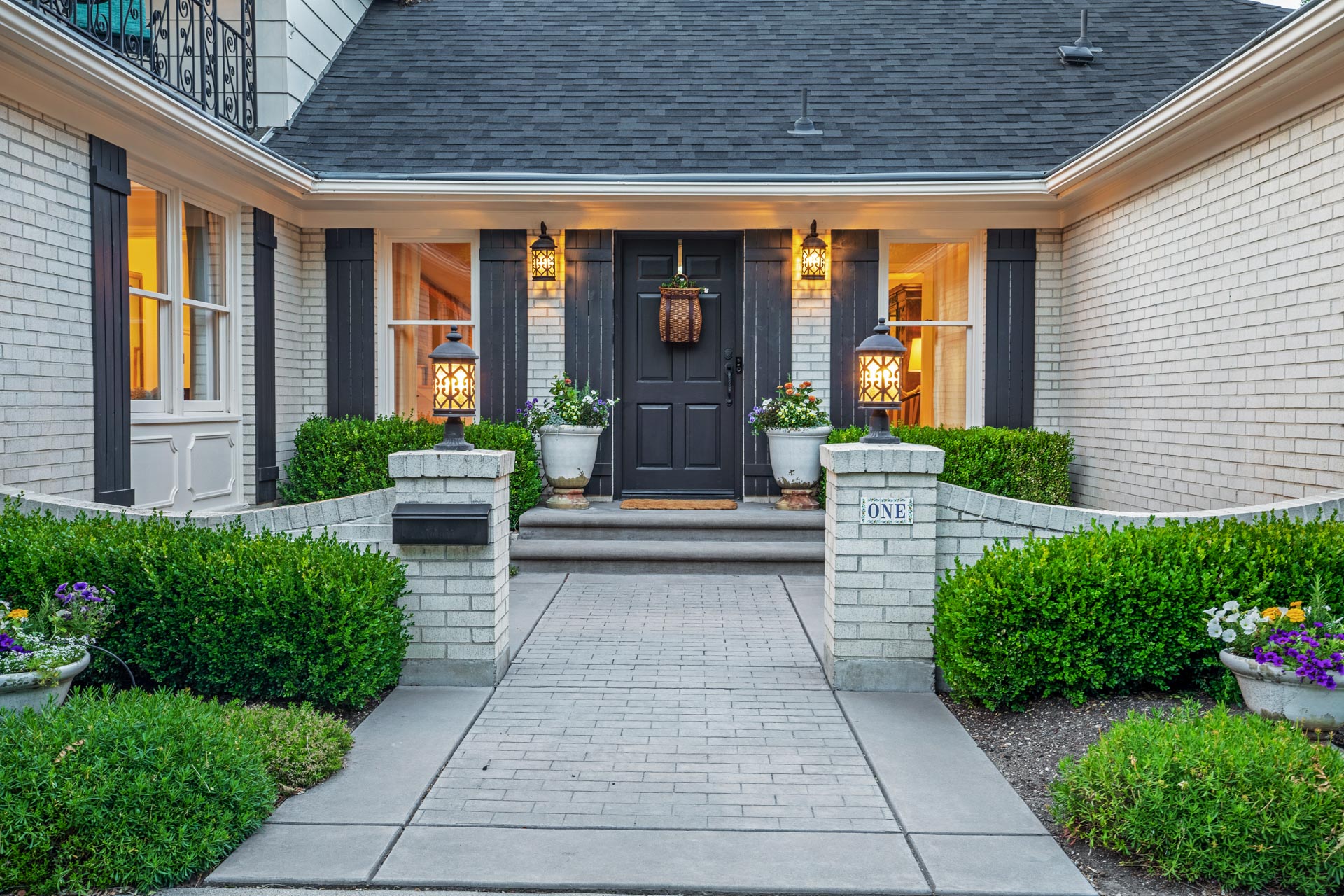Serving the Jackson, MI Area Since 1981
Jackson, Michigan's Plumbing Experts
We cover a large service area around our physical location and serve all of Jackson, Michigan, and the surrounding areas.
Jackson, Michigan Plumbing Services
We’re a full-service plumbing company that handles everything from quick repairs to regular maintenance and brand-new installations. Got a small leak? Clogged drains? Need routine upkeep or a brand-new water heater or water softener? We’ve got you covered. Our skilled plumbers know how to pinpoint the problem the first time and get it fixed fast. Contact us today schedule an appointment or ask our specialists any questions you may have.
Welcome To Aspen Plumbing Services

Aspen Plumbing Services is a customer-focused plumbing company that was founded in 1981. Located in Jackson, MI, we employ highly trained technicians whose goal is to provide the absolute best service and guarantees in the business and who go above and beyond the call of duty to make sure that all of our customers have an amazing experience working with us.
We specialize in designing, installing, and repairing plumbing systems and plumbing appliances for owners of existing homes and buildings in Jackson, Michigan. We take special pride in the plumbers we train and employ–a fact you’ll notice immediately in the attitude and integrity they bring to your job site. Our entire company works hard to make your experience with us hassle-free and enjoyable. Should our plumbers make a mistake, we will do everything in our power to correct it.

Why Choose Us?
At Aspen Plumbing Services, we are dedicated to being the trusted plumbing, soft water and drain cleaning and jetting experts, and have been for over 40 years. We serve all of Jackson County and many surrounding areas and our team works hard to ensure our customers get exactly what they need. From using top-of-the-line equipment to making sure our team is well-trained, we strive to provide 5-star service each and every time. Call us today to schedule your service to find out why we have earned a reputation of integrity and quality work.

- In Business Since 1981
- Family Owned & Operated
- Free Estimates on Installations
- Low Interest Financing Available
- Emergency Service
- Available 24/7
- Licensed & Insured
- Performance & Satisfaction Guarantees
Plumbing F.A.Q’S
Frequently Asked Questions
What Sort Of Drain Cleaning Services Do You Offer In Jackson?
We offer the following Drain Cleaning Services in Jackson, Michigan:
- Floor Drain Cleaning
- Cleaning Sink Drains
- Clogged Toilets
- Main Sewer Line Cleaning
- Video Drain Inspections
- Hydro Jetting
- Regular Drain Maintenance
When it comes to drain cleaning, our team of highly skilled and trained drain experts have years of experience and can provide you with clear drains for years to come. Contact us to schedule your drain cleaning services!
What Types of Water Heaters Work Best For Homes In Jackson?
In Jackson, Michigan, both tank and tankless water heaters are popular, depending on household needs. Tank water heaters are reliable and cost-effective, while tankless systems provide endless hot water and can be more energy-efficient.
The best choice often depends on your home’s size, your hot water usage, and your budget. Because Michigan winters can be long and cold, many homeowners opt for units with higher efficiency ratings to save on energy costs.
A local plumber, such as the ones at Aspen Plumbing Services, can help you choose the right model and size for your specific needs.
We also offer free estimates on all installations!
Do You Offer Emergency Plumbing Services In Jackson, Michigan?
Yes! We provide emergency plumbing services throughout Jackson, Michigan, so you’re never left dealing with a crisis alone.
Whether it’s a burst pipe, a sewer backup, or a major leak, our team can respond quickly to protect your home and minimize damage. We know plumbing problems don’t always happen during business hours, which is why we’re ready to help when need be!
Our fully equipped service vehicles allow us to handle most repairs on the spot. When emergencies strike, you can count on us to be there fast and get your plumbing back in working order.
How Can I Tell if I Need Drain Cleaning in My Jackson, Michigan home?
Signs you need professional drain cleaning include slow-draining sinks, gurgling noises, frequent clogs, or foul odors coming from drains.
In Jackson, older homes sometimes have pipes that are more prone to buildup or tree root intrusion. Regular maintenance can help prevent major blockages that cause water damage or backups.
Professional hydro jetting or snaking can clear tough clogs more effectively.
Complete Home Maintenance Plans To Keep Your Equipment Running Strong
Comfort Club

Join Our Comfort Club
What's Included:
- Whole Home Maintenance Inspection
- Whole Home Maintenance Services
- Plumbing System Maintenance
- Water Heater Flush
- Heating & Cooling Maintenance
- Furnace & A/C Tune Up
- Electrical System Safety Inspection
- Carbon Monoxide & Smoke Detector Inspection
Why It Pays To Be A Member:
- 15% Discount on All Services
- Priority/Front Of The Line Services
- No Standard Diagnostic Fees
- Extend the Life of Your Equipment
- Keep Manufacturer’s Warranty Valid
- Keep Extended Warranties and Guarantees in Effect
Plans Starting at $20/month
Current Members
Current members of our Comfort Club can schedule services when it is convenient below. If you have any questions about your current plan, services that are included, when your next service is due, etc. feel free to call our main office line to speak with a specialist who can assist you.
Financing Options for Jackson, Michigan Residents
We offer a wide range of financing options for every budget and situation and can finance both large and small plumbing projects in Jackson, Michigan. For more information, call us today to speak with a member of our team who can answer any questions you may have. For immediate approval, click on the link below to get approved in just a few minutes.
- Low Interest Financing
- 0% Interest For Up To 12 Months
- Get Approved In Minutes

Aspen Plumbing Services

- 4131 W. Michigan Ave., Jackson, MI 49202
- Phone: (517) 750-9913
- Fax: (517) 750-0900
- Available 24/7
Contact Us
"*" indicates required fields

